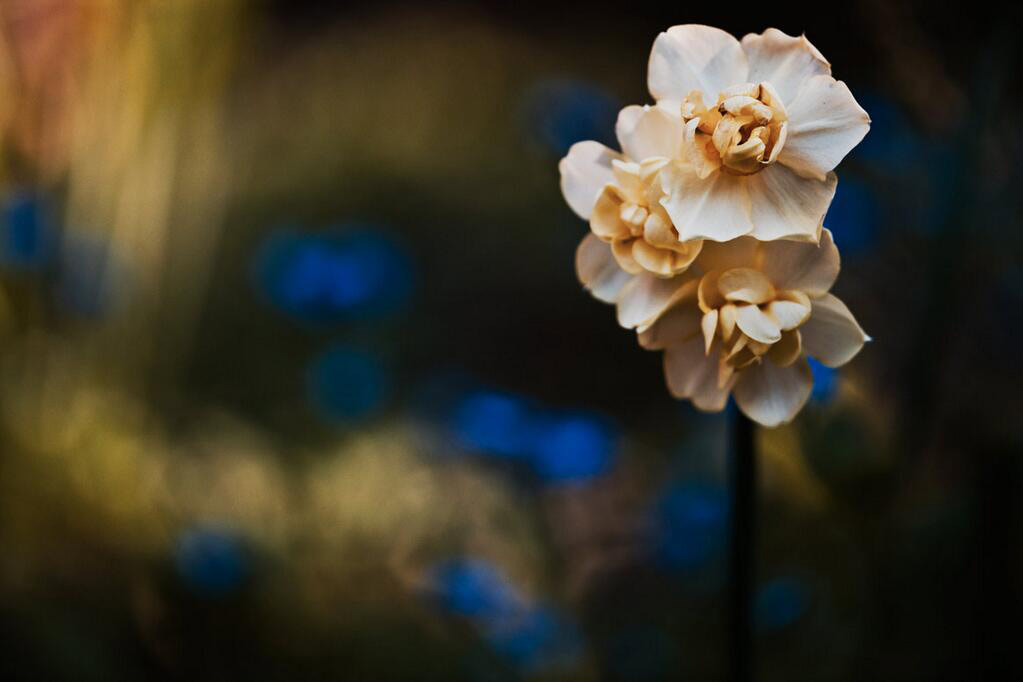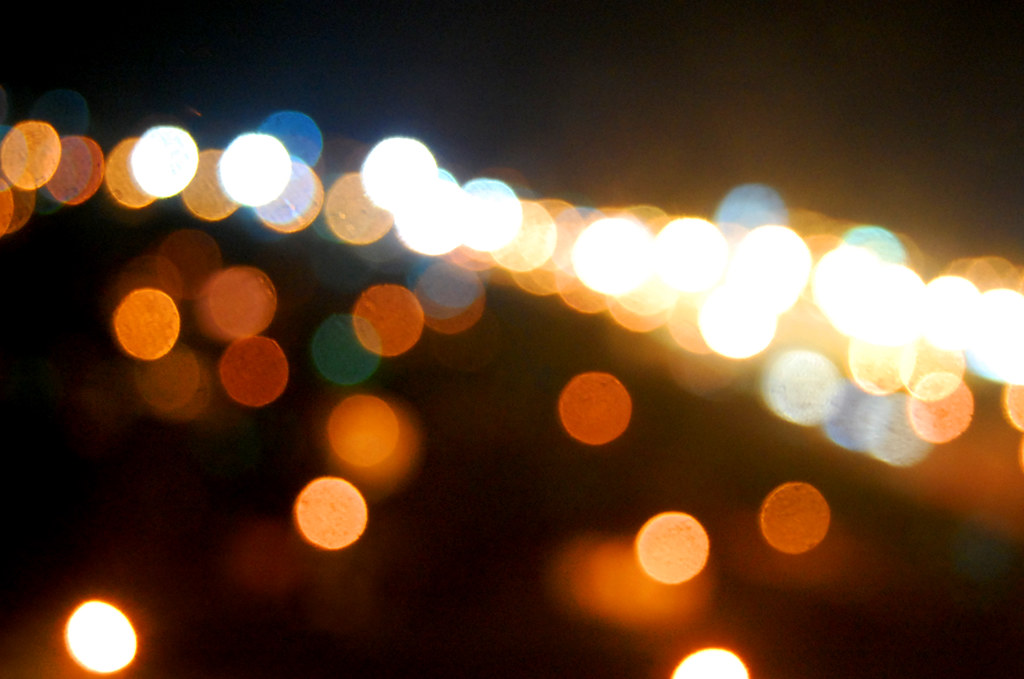

This is most apparent when a lens produces hard-edged bokeh. For conventional lens designs (with bladed apertures), when a lens is stopped down smaller than its maximum aperture size (minimum f-number), out-of-focus points are blurred into the polygonal shape formed by the aperture blades. The shape of the aperture has an influence on the subjective quality of bokeh as well. This may actually be desirable, as blur circles that are dimmer near the edges produce less-defined shapes which blend smoothly with the surrounding image. Lenses that are poorly corrected for spherical aberration will show one kind of disc for out-of-focus points in front of the plane of focus, and a different kind for points behind. A well-known lens that exhibited the latter "soap-bubble" characteristic was that produced by Hugo Meyer & Co., more recently revived by Meyer Optik Görlitz. Depending on how a lens is corrected for spherical aberration, the disc may be uniformly illuminated, brighter near the edge, or brighter near the center. In out-of-focus areas, each point of light becomes an image of the aperture, generally a more or less round disc. When used in portrait photography (for their "natural" perspective), the photographer usually wants a shallow depth of field, so that the subject stands out sharply against a blurred background.īokeh characteristics may be quantified by examining the image's circle of confusion. Good bokeh is also important for medium telephoto lenses (typically 85–150 mm on 35 mm format). "Good" bokeh is especially important for macro lenses and long telephoto lenses, because they are typically used in situations that produce shallow depth of field. Though difficult to quantify, some lenses have subjectively more pleasing out-of-focus areas. The depth of field is the region where the size of the circle of confusion is less than the resolution of the human eye. It is sometimes pronounced / ˈ b oʊ k ə/ BOH-kə. The spellings bokeh and boke have both been in use since at least 1996, when Merklinger had suggested "or Bokeh if you prefer." The term bokeh has appeared in photography books as early as 1998.

The English spelling bokeh was popularized in 1997 in Photo Techniques magazine, when Mike Johnston, the editor at the time, commissioned three papers on the topic for the May/June 1997 issue he altered the spelling to suggest the correct pronunciation to English speakers, saying "it is properly pronounced with bo as in bone and ke as in Kenneth, with equal stress on either syllable". The related term bokashi ( 暈かし) means intentional blurring or gradation that is a noun form of the transitive verb bokasu ( 暈す), which means to make something blurry, rather than to be blurry. Tobokeru means playing dumb, and toboketa kao refers to a poker face. Nebokeru ( 寝ぼける) is a verb denoting the actions or condition of someone who is half-asleep, or nodding off. Jisaboke ( 時差ボケ) (literally, "time difference fog") is the term for jet lag. This is derived as a noun form of the verb bokeru, which is written in several ways, with additional meanings and nuances: 暈ける refers to being blurry, hazy or out-of-focus, whereas the 惚ける and 呆ける spellings refer to being mentally hazy, befuddled, childish, senile, or playing stupid. The term comes from the Japanese word boke ( 暈け/ボケ), which means "blur" or "haze", resulting in boke-aji ( ボケ味), the "blur quality". The opposite of bokeh-an image in which multiple distances are visible and all are in focus-is deep focus. However, bokeh is not limited to highlights blur occurs in all regions of an image which are outside the depth of field. Photographers may deliberately use a shallow focus technique to create images with prominent out-of-focus regions, accentuating their lens's bokeh.īokeh is often most visible around small background highlights, such as specular reflections and light sources, which is why it is often associated with such areas. Some lens designs blur the image in a way that is pleasing to the eye, while others produce distracting or unpleasant blurring ("good" and "bad" bokeh, respectively). Differences in lens aberrations and aperture shape cause very different bokeh effects. Bokeh has also been defined as "the way the lens renders out-of-focus points of light". In photography, bokeh ( / ˈ b oʊ k ə/ BOH-kə or / ˈ b oʊ k eɪ/ BOH-kay Japanese: ) is the aesthetic quality of the blur produced in out-of-focus parts of an image.


 0 kommentar(er)
0 kommentar(er)
